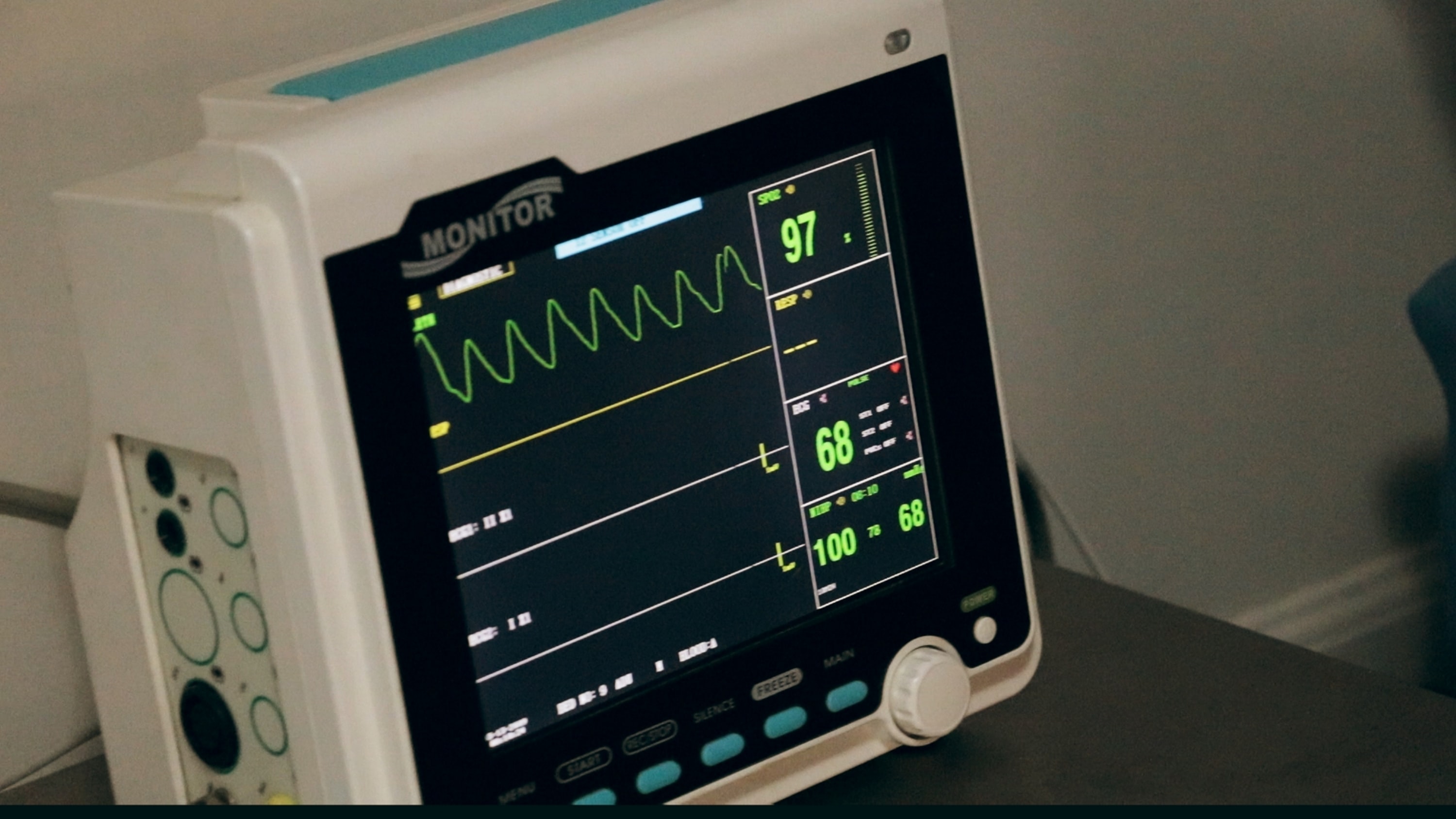microRNA as a prognostic biomarker
Heart attack diagnosis: fast and unambiguous thanks to artificial intelligence
People that arrive in emergency rooms with chest pain require swift action in order to rule out a heart attack or to initiate vital life-saving therapy. However, despite many advances, current tests are not yet optimal: they either take hours or produce false-positive results. Researchers at Heidelberg University Hospital are now using AI in an approach that takes microRNAs from a blood sample to specifically diagnose ‘acute coronary syndrome’.
Tightness or pain in the chest area around the heart can have a variety of causes. These kinds of symptoms can be triggered, for example, by spine, gastrointestinal tract or lung diseases, but can also be signs of a circulatory disorder of the heart - a heart attack (myocardial infarction) or its precursor (unstable angina pectoris) - known as acute coronary syndrome (ACS).
Diagnosing a heart attack can take time and is not always conclusive
 Unstable angina pectoris is often not detectable with an ECG. © Jair Lázaro / Unsplash
Unstable angina pectoris is often not detectable with an ECG. © Jair Lázaro / UnsplashElectrocardiography (ECG) or analysing troponin levels in the blood are the common procedures used to find out whether individuals who arrive in emergency rooms with chest tightness or pain have in fact suffered a heart attack or unstable angina pectoris. Troponin plays an important role in the healthy processes of heart muscle contraction and is released in greater quantities into the blood when the heart is damaged. That is why altered troponin levels can be rapidly measured in a blood sample using highly sensitive test systems. Determining these troponin levels is therefore still considered the laboratory diagnostic gold standard for determining whether an individual has suffered a heart attack.
However, problems with such analyses include the time it takes for troponin levels to rise in the blood, which delays diagnosis. Troponin levels can also be elevated for other reasons, requiring several blood samples to be taken at intervals in order to establish the kinetics of troponin. The test also has its limitations: people with ACS can experience symptoms typical of heart attacks, but in many cases neither ECG nor troponin levels are conclusive. In such cases, catheter examinations might reveal severe blood vessel constrictions, which in turn requires swift therapeutic action.
Rapid and safe results with miRNA
 Dr. med. Elham Kayvanpour is conducting research at Heidelberg University Hospital to find a way to rapidly diagnose acute coronary syndrome using microRNA markers. © University Hospital Heidelberg
Dr. med. Elham Kayvanpour is conducting research at Heidelberg University Hospital to find a way to rapidly diagnose acute coronary syndrome using microRNA markers. © University Hospital HeidelbergThat's why researchers at Heidelberg University Hospital started looking for alternatives some years ago. Their endeavour proved successful: Dr. med Elham Kayvanpour, part of Prof. Dr. med. Benjamin Meder’s team at the Institute for Cardiomyopathies Heidelberg (ICH.) and the Department of Cardiology, Pulmonology and Angiology at Heidelberg University Hospital, developed an approach involving AI that is able to quickly and reliably detect an acute heart attack, and in particular ACS, by determining the concentration of certain microRNAs (miRNAs).
"Our research group has long been interested in diagnostic and prognostic biomarkers that can be used in cardiology; back in 2011, we identified and published the relevance of microRNA in the regulation of cardiovascular disease1)," Kayvanpour reports. "At that time, we conducted a genome-wide study that found that over 100 different microRNAs were dysregulated in patients who had suffered an acute heart attack when compared to healthy individuals. So we thought that this type of RNA could be a valuable new biomarker for diagnosing cardiovascular diseases."
Neural networks calculate probability of acute coronary syndrome
 David Lehmann (M. Sc.) is an AI expert at ICH. and helped develop the computer models for the microRNA assays. © Heidelberg University Hospital
David Lehmann (M. Sc.) is an AI expert at ICH. and helped develop the computer models for the microRNA assays. © Heidelberg University HospitalThe researchers then began to develop miRNA typing as an alternative to determining troponin blood levels. "We studied about 2,500 miRNAs, documented clinical parameters and put them in context," the cardiologist explains. "But we quickly realised that these data could no longer be processed using standard statistical methods. So we came up with the idea of using AI to investigate and map the complexity of microRNA, and developed our own method to arrive at an AI-assisted diagnosis. The neural networks underlying AI use data from the corresponding miRNA group to calculate whether an acute coronary syndrome is present."
David Lehmann (M. Sc.), AI expert at the institute, adds: "For our investigations, we trained a dataset of clinical parameters with the input from miRNA concentrations in the neural network and adjusted the weighting until everything matched the real diagnosis. While we cannot say why individual miRNAs are relevant in certain datasets, our main concern is to arrive at a correct diagnosis in the shortest possible time. The pathomechanisms will, of course, need to be explored in subsequent studies."
Infobox: MicroRNA
MicroRNAs (miRNAs) are very short, highly conserved, but non-coding ribonucleic acid segments consisting of only a few - usually between 18 and 24 - nucleotides, which play an important role in gene regulation, i.e. they activate or suppress gene transcription. They thus enable eukaryotic cells to control complicated gene expression cascades in a variety of biological processes, e.g. proliferation, differentiation, apoptosis and stress response. Several thousand different miRNAs are currently known, but only a few seem to be really important for the cell.
In the cardiovascular system, miRNAs are not only involved in healthy cardiac and vascular development, but also play an essential role in disease. This is because in the event of disease, a cell’s regulatory network is activated, which also includes the miRNAs: in the case of disease, miRNAs that are different from those that occur in healthy individuals are active and hence detectable.
Nucleic acid biomarkers as a bedside test
miRNAs can be analysed easily and reliably thanks to modern laboratory methods. "Until recently, you could only measure them individually using PCR and it was not possible to perform that many tests at once," Kayvanpour says. "Nowadays, we can analyse many samples in parallel on microarrays or using NGS (next-generation sequencing). NGS allows us to identify even very subtle sequence differences and could enable us to discover many new miRNA types. Thanks to high-throughput technologies, we can now study whole patient transcriptomes."
The researchers' investigations have produced two major results that can be put to concrete use in the future: first, 34 miRNAs from the literature and the researchers’ own work were validated and shown to be clearly associated with a heart attack.2) Second, the researchers found ten miRNAs that, when used in combination, are particularly well suited as cardiovascular biomarkers for diagnosing ACS. "The eventual goal is to be able to apply these biomarkers as a bedside test some time in the future. We are still some distance away from that at the moment," Kayvanpour says. "But we hope that miRNAs in combination with troponin can increase specificity and reduce ACS diagnosis time, as it now only requires a single sample rather than sequential blood withdrawals." The Heidelberg study is one of the first to use AI to evaluate miRNA profiles for diagnosing cardiovascular diseases.
What’s next?
In the coming weeks and months, the researchers will be using miRNA for differential diagnoses. "Troponin cannot achieve this as marathon finishers often also have elevated troponin levels that would typically be diagnosed as an acute heart attack; other diseases can’t often be distinguished well enough from each other using troponin either," Kayvanpour says. "miRNA analyses can give us early and clear results even in such cases. Establishing this marker is something we still need to work on as well as looking how we can bring the tests to patients."
The researchers are also working on fine-tuning the AI aspect of the analyses: "We want to give other physicians the opportunity to use our AI," Lehmann reports. "And we also want to establish an AI approach for diagnosing other heart diseases, and adapting the approach so it can become a tool to predict a disease or adjust a drug therapy."